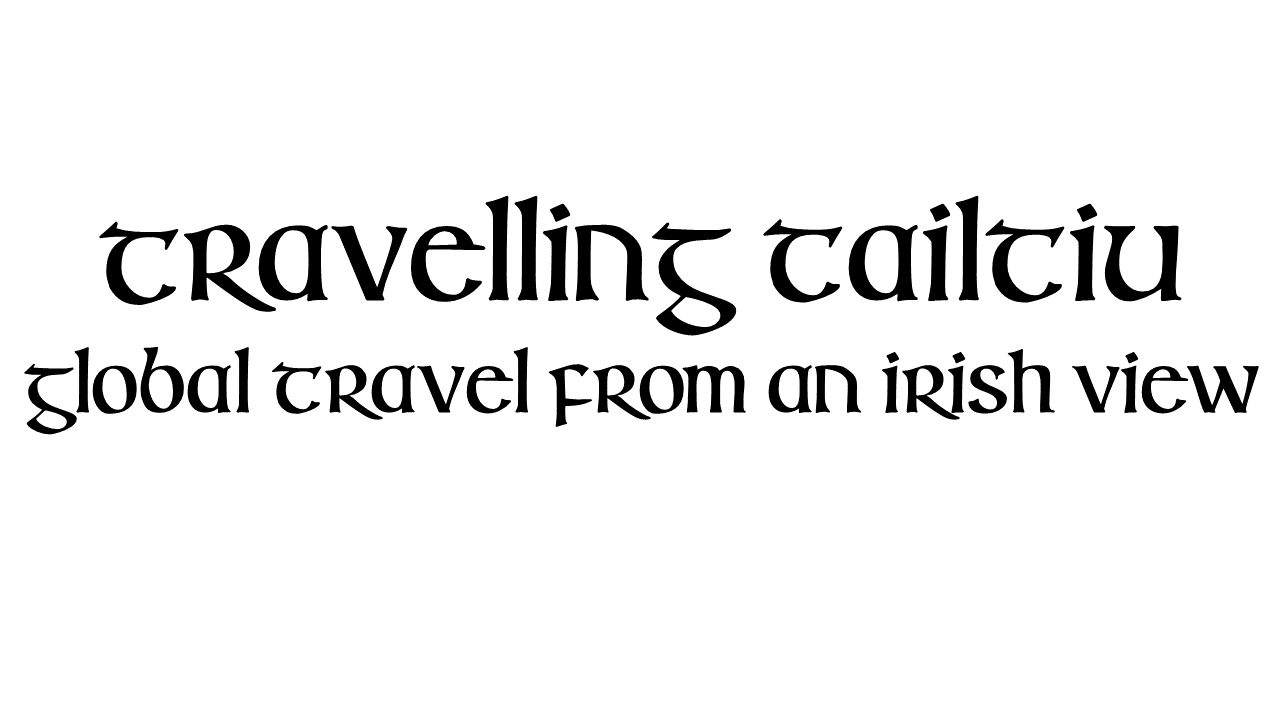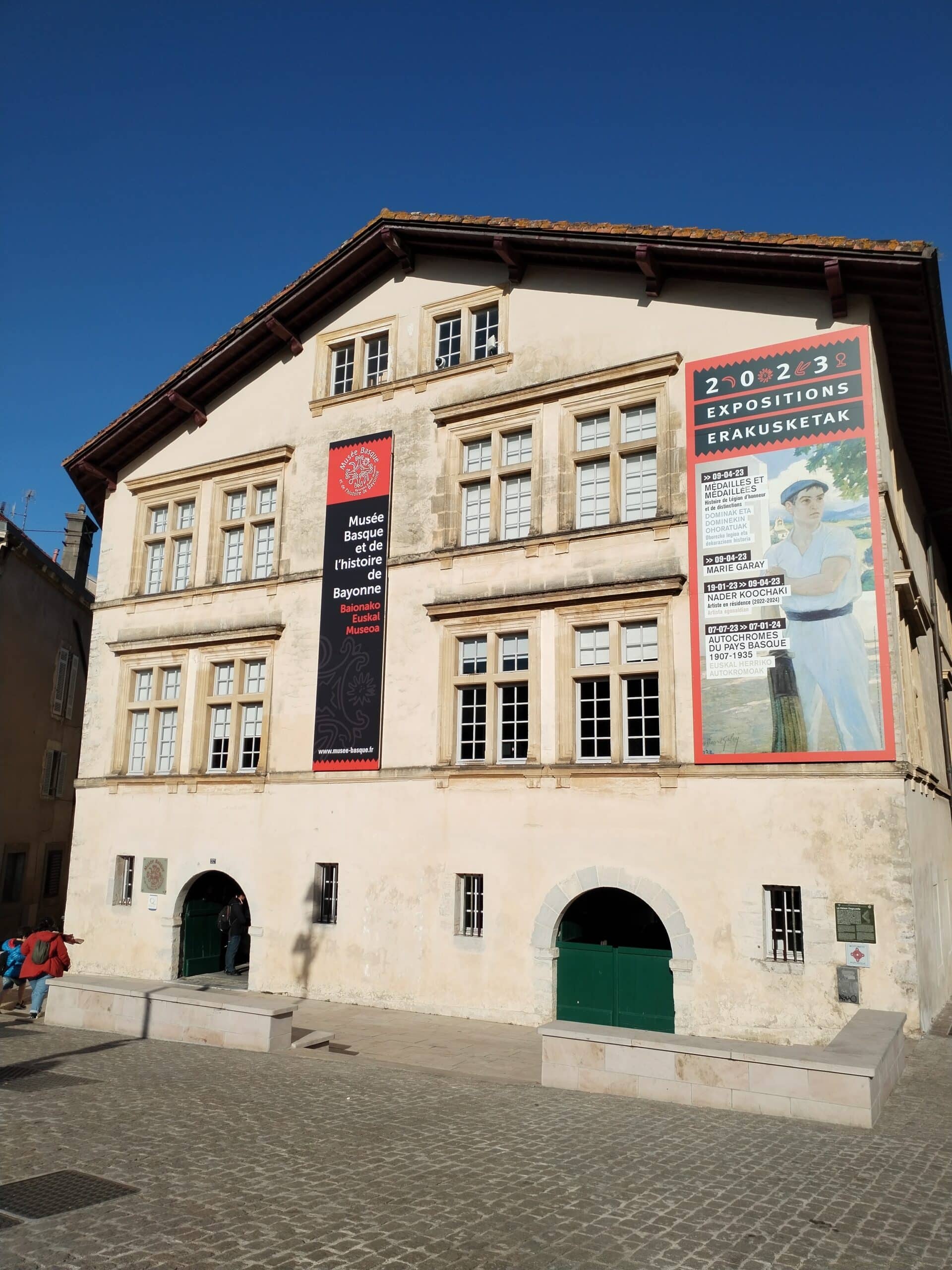The French Basque Country
North and South of the River
The French Basque Country is a destination that often goes unnoticed. It's in that little corner of the Bay of Biscay where France meets the Iberian Peninsula on the Atlantic side. Even when cool, there's a warm glow from the sun, and a dreamy feeling as you enjoy the cliffwalks and beaches. And its towns are both historic, vibrant and glowing.
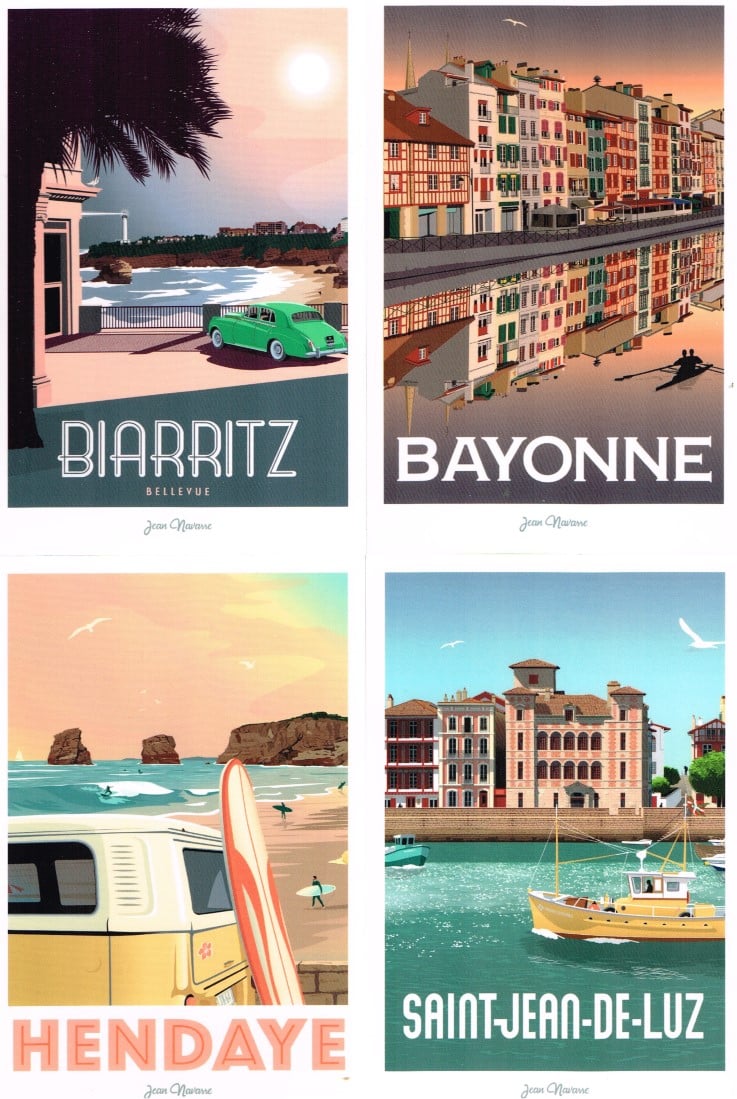
The coastal towns of Iparralde, the French Basque Country. Designs by Jean Navarre, whose Etsy you can visit by clicking on the images here.
Iparralde
Iparralde, as they call the French Basque Country in the Basque language, is only a 90-minute drive from Bilbao, where we are based. At Tailtiu, we don't drive, so the bus to San Sebastián has to do. It provides a good excuse for a night in that wonderful city, which you can catch a quick glimpse of here. From there, it is only 25 minutes on a bus or train to the French-Spanish border.
In the Basque Country, we have a wonderfully cheap but sometimes slow local train network called the Euskotren. You can see the website here in English, with timetables, maps, tickets and fares easy to see. This network links to other train networks in Spain, and gets you across the French border into Hendaia. The Euskotren station is right next door to the French SNCF station, almost the same place really, so you can effortlessly continue a train journey northwards through France.
As we have said, the Euskotren between Bilbao and San Sebastián can be a bit slow. However, the journey is wonderful as it snakes inland through the Basque provinces of Bizkaia and Gipuzkoa, coming out and following the Gipuzkoan coastline to its destination. From there, you can change train, and then it's a half-hour journey to Hendaia, just inside France. This is a wonderfully-scenic journey as the Basque Country is very foresty with small mountains and rocky cliff ledges. Its coast is beautiful too and you pass through dreamy little seaside towns like Zumaia and Zarautz. Ultimately, if you go to the French Basque Country from Bilbao side, the Euskotren is worth the time, and the price is decent too.
Going South?
If you are travelling south through France, the four coastal towns in this article are on the train line. You can get here from Paris or Bordeaux, both of which have international airports. The wine hub of Bordeaux looks especially good to link with on a trip down this neck of the woods. Bordeaux is only two hours from Bayonne from train, so both places could form part of the same local trip.
Or going North?
Or maybe you are heading up over the French-Spanish border? As we've mentioned, San Sebastián is nearby, and has an airport connecting with Barcelona, Madrid and other Spanish airports.
Bilbao has an international airport, so you could do a full tour of the Basque coast, or you could jump onto a bus or train from there. In any case, you can check Bilbao out here. It is great for a visit, and given its transport connections, is worth considering as a point of entry previous to the French Basque Country.
What to do and see in the French Basque Country
Iparralde consists of three Basque provinces including the coastal district of Lapurdi, which are home to four notable towns. Hendaia, Saint-Jean-de-Luz, Biarritz and Bayona are small but worthy places for a sea and sunshine trip. You can also do a bit of shopping here.
Surfing
Surfing is a modern cultural phenomena all along the Basque Coast, from its most western coasts near Bilbao as far as Anglet in the French Basque Country. A lot of surfers rave about the waves here, and the coast is dotted with surf schools. Bodyboarding is fun and less complicated than surfing, and the beaches provide a good opportunity to do this.
Beachlife
This is a real draw for the crowds and the coastline is mostly sandy with a few clifflines. Remember that you are in the Atlantic Ocean, more specifically the Bay of Biscay, so temperatures are Atlantic, not Mediterranean. Saying that, summertime has pleasant temperatures for swimming and beachwalkers are good to go all year round.
A lot of the French Basque coastline is sandy beach, and the remainder is cliffs with pleasant walkways. If you are someone who likes green landscape and ocean-blue coastline, you'll get plenty of this, and the coast is well set up for walking holidays.
Camping
The area is absolutely full of campsites. We stayed in a campsite a few years ago which is addressed as Saint-Jean-de-Luz but in reality is closer to Guéthary. Itsas Mendi Campsite is relatively cheap and covers an expansive area backing onto several beaches, one of which being Plage de Maiarko. It's a tranquil wee hidden beach with surfers, swimmers and beach bars. We had a few beers and something to eat in Le Miam, a popular spot with great views of the sands.
These campsites dot the entire coastline and often have their own bars and restaurants, sometimes even a little supermarket, in the complex. They tend to have options to stay in static caravans or tents, and some offer parking for motorhomes. Motorhomes can also avail of simple parking space areas with electricity hooks or water availability. We saw one of these opposite Les Deux Jumeaux train station in Hendaia, though the Google Reviews haven't been kind to it.
Paying or Going Wild?
Paying €10+ for stuff like parking space might put caravaners off as wild camping is legal in France. Parking up in a quiet area where you are disturbing nobody is fine as long as you are doing just that. As long as you aren't on private land or annoying anyone, it is apparently fine. Just make sure you have your supplies on board and the batteries charged up. For more information, here is a useful article on the subject, though we strongly advise you to check the proper authorities for accurate and up-to-date legal information.
The Coastal Towns
Hendaya
If you arrive from the south across the border from Irún, or on the boat from Hondarribia, as we always do, you first come to Hendaye, spelled Hendaia in Basque. The towns here tend to have French, Basque and Spanish spellings relatively similar to each other. Therefore, we've sprinkled this article with each of the spellings so as not to leave anyone out!
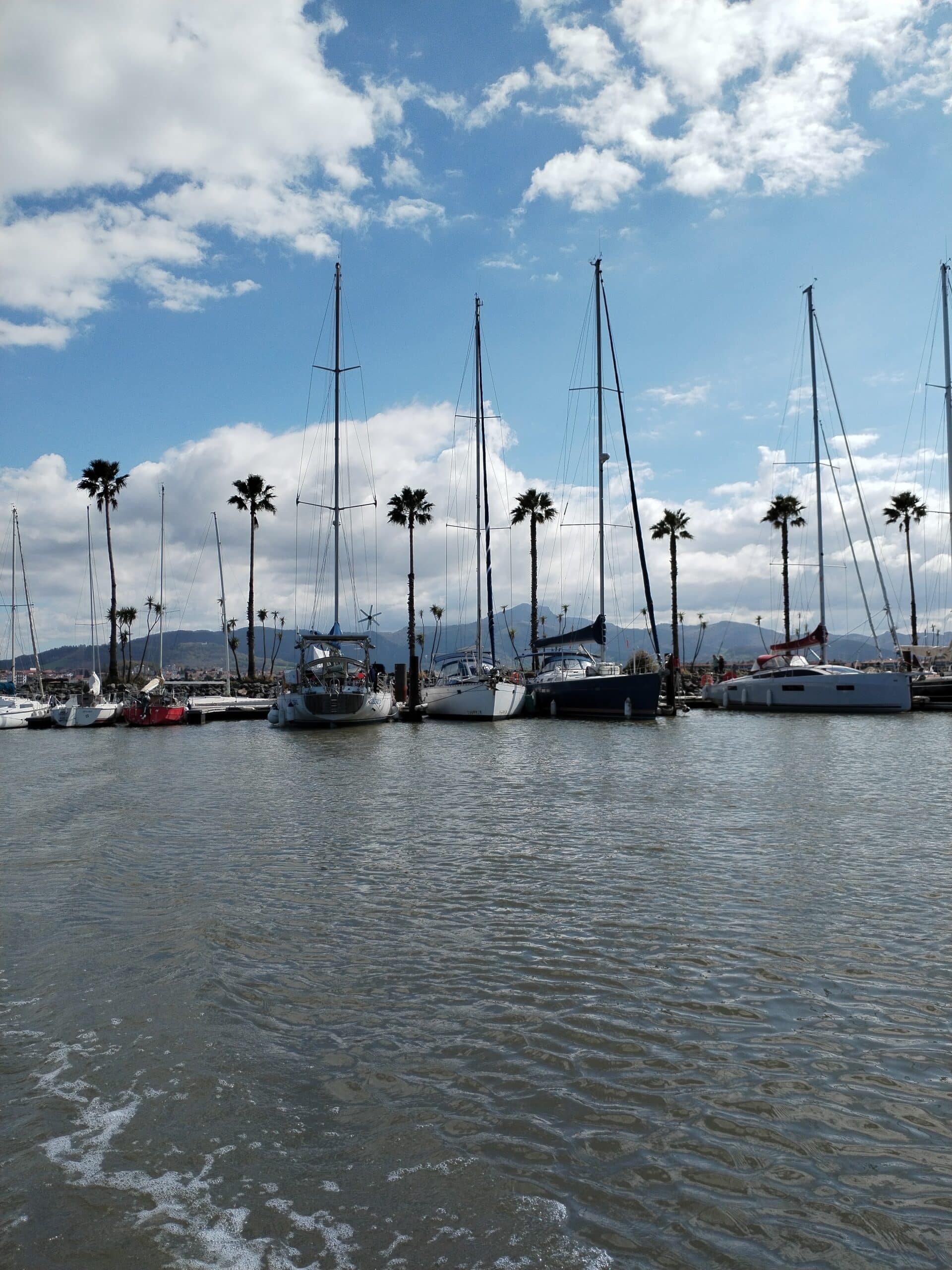
The Marina in Hendaia
The Market
There is a Wednesday morning market selling various food stuffs from the area. This is held in front of the town hall on one side of the street, with some nice cafeterias and bookshops on the other side. Librairie La Grande Illusion was a particularly nice and friendly stop for us, and you can find books in various languages in this multilingual bookshop. It has an old-school arcade machine, so some Streetfighter II was played while shedding nostalgic tears for the 1990s.
Snacks and Food on Market Day
Next door, there is a pleasant wee coffee shop called LO VI, whose Instagram you can check out here. The place seems run by English speakers, or polyglots anyway, and has a nice sofa up the back to lie back on while you have a croissant or bun with your coffee.
In the end, we availed of a few local meats from a market stall for our dinner later on, and moved onward toward the beach. There is a right bit of walking in the town as its territory is expansive, but there is plenty to see as you work yourself toward the seaside area.
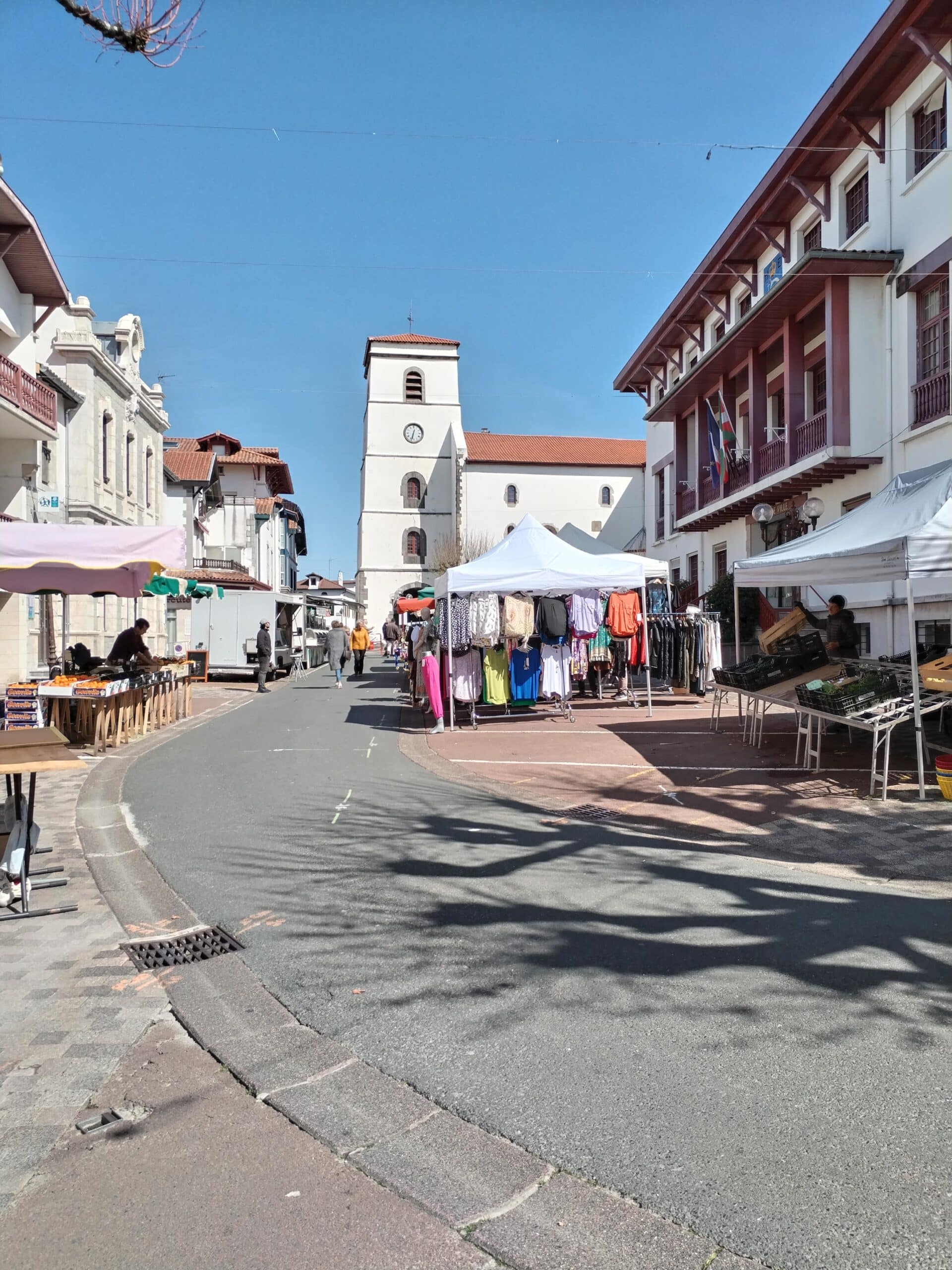
Market Day in Hendaia. You can see the town's tourism and commerce Instagram page by clicking on the photo.
The Best of Both Worlds
Hendaia is right on the border, meaning that Irún is walking distance. Irún is just over the frontier and despite coming across as a functional kind of town, it has its charms. A major advantage that Irún has is its proximity to Hondarribia. Hondarribia is an enchanting little port with a majestic citadel and the old Basque architectural style. It can be pricy to stay in, so a cheaper option is staying in Irún. Irún is equipped with a shopping centre and other urban amenities. It is so close that you can walk up to Hondarribia, or get the town bus service. As you can get a boat to Hendaia from Hondarribia, or walk across from Irún, the three are well connected.
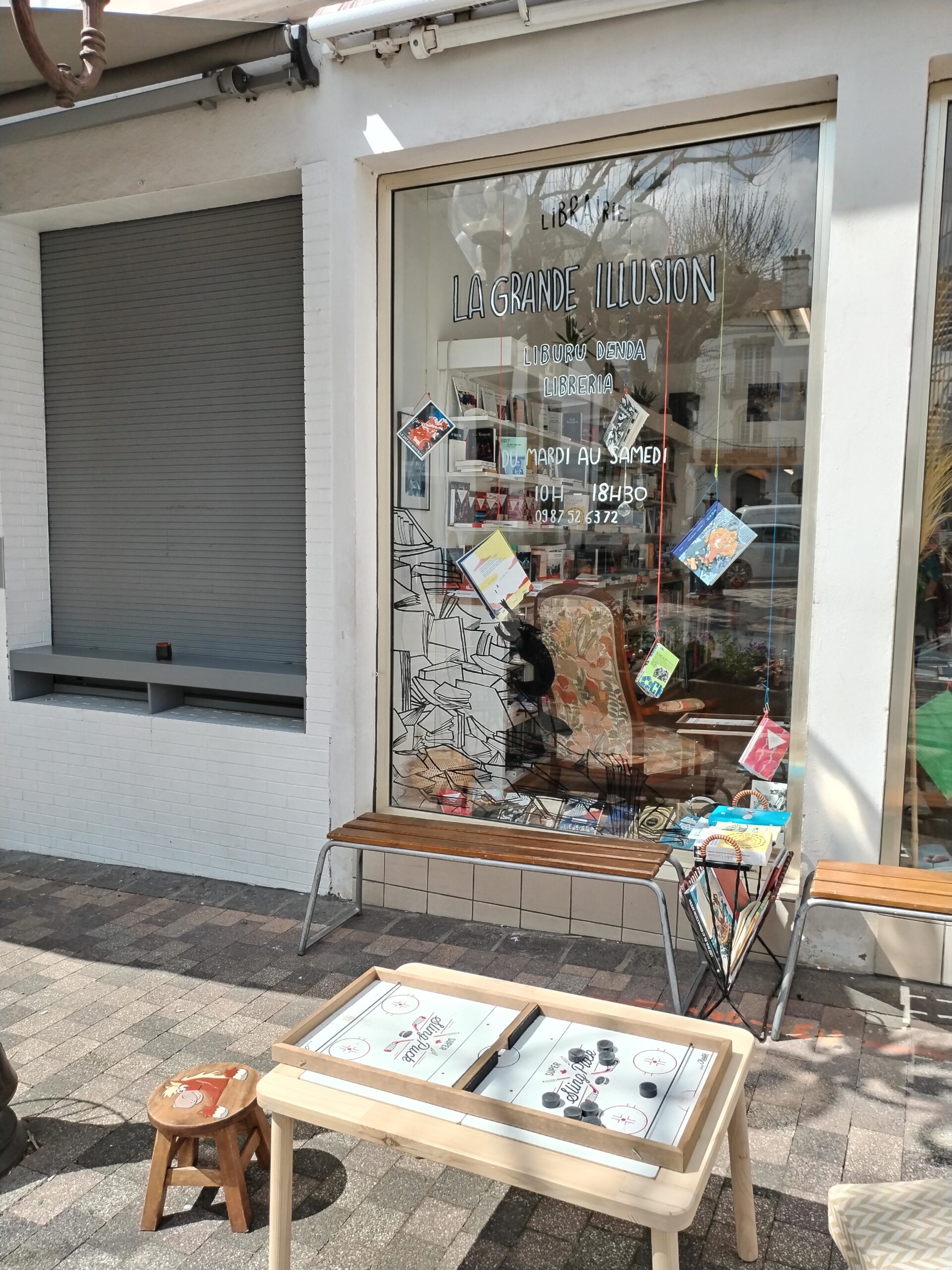
Librairie La Grande Illusion, a nice, superfriendly find in Hendaia and nice to visit during the Wednesday morning market. Check out their Instagram page by clicking on the photo.
The Boulevard and Beach
VIsitors, especially those from the other Basque areas such as Bilbao, rave about the beaches in the French Basque Country. Hendaia is no different and the sheer length of the beach is stunning. In reality, Hendaia and Hondarribia nearly share the same beach. However, the physical national border of the Bidasoa river cuts the sands into two.
The Basque Corniche
The Basque Country has many coastal cliff walks. Over on Bilbao side, you have walks from Getxo to Sopelana from where you can see as far as the neighbouring Spanish province of Cantabria. Between Hendia and Saint-Jean-de-Luz, you have the Corniche, meaning the ledge. This is a 10-kilometre walk between Hendaia and Saint-Jean-de-Luz on which you pass an impressive château as you walk northwards, and each side of your walk is either mountainous inland or sparkling sea.
The Château
Château D'Abbadia is outside town to the north. You can see it here and is an impressive sight if a bit pricey to visit. Still, it is a nice short walk out of the northern end of town and it has a little visitor centre. There is another château on up and inland near to Saint-Jean-de-Luz called Château D'Urtubie, whose website in English is here. Each of these great French manor houses are surrounded by rolling countryside, so while some like to go in and see, you could avoid paying an entrance fee and just enjoy the views.
Saint Jean de Luz
This is arguably the nicest, or dreamiest of the coastal communities here. This is our choice if you really have to choose between the coast towns. Its fame stretches from history to the modern day, and looks like a playground of the rich. However, the everyday tourist can enjoy the town though the price of accomodation isn't the cheapest. It isn't the most expensive either, and it would be a shame not to see such a magical wee place.
The Basque Corsairs and the Vipers' Nest
The town has been a prominent port for many centuries and for various reasons. While its waters are currently a parking spot for the monied classes and their floating assets, it used to be notorious for its privateers. The English called it the Vipers' Nest, as the local fishermen changed profession and started raiding English marine traffic on behalf of the Spanish king a few centuries back.
Jean Lafitte-Celebrity Pirate and Bane of New Orleans
Indeed, some historians say the notorious pirate Jean Lafitte's origins are in the neighbouring town of Bayona. Lafitte was well known in the New Orleans area, now in the USA and once French territory, on the Gulf of Mexico. His Basque origins are claimed both here and south of the border, in the Biscayan city of Orduña. The French Basque Country is located on the Atlantic corner between France and Spain, with England not very far northward. Its seafarers were consequently well placed to play a part in the maritime political intrigues of the 16th and 17h Centuries. Many like Lafitte would end up crossing the broad Atlantic and plying their trade across the Spanish Main and West Indies.
In any case, piracy is remembered here though it's doubtful that the salty sea dogs of the modern French Basque Country will make you walk the plank.
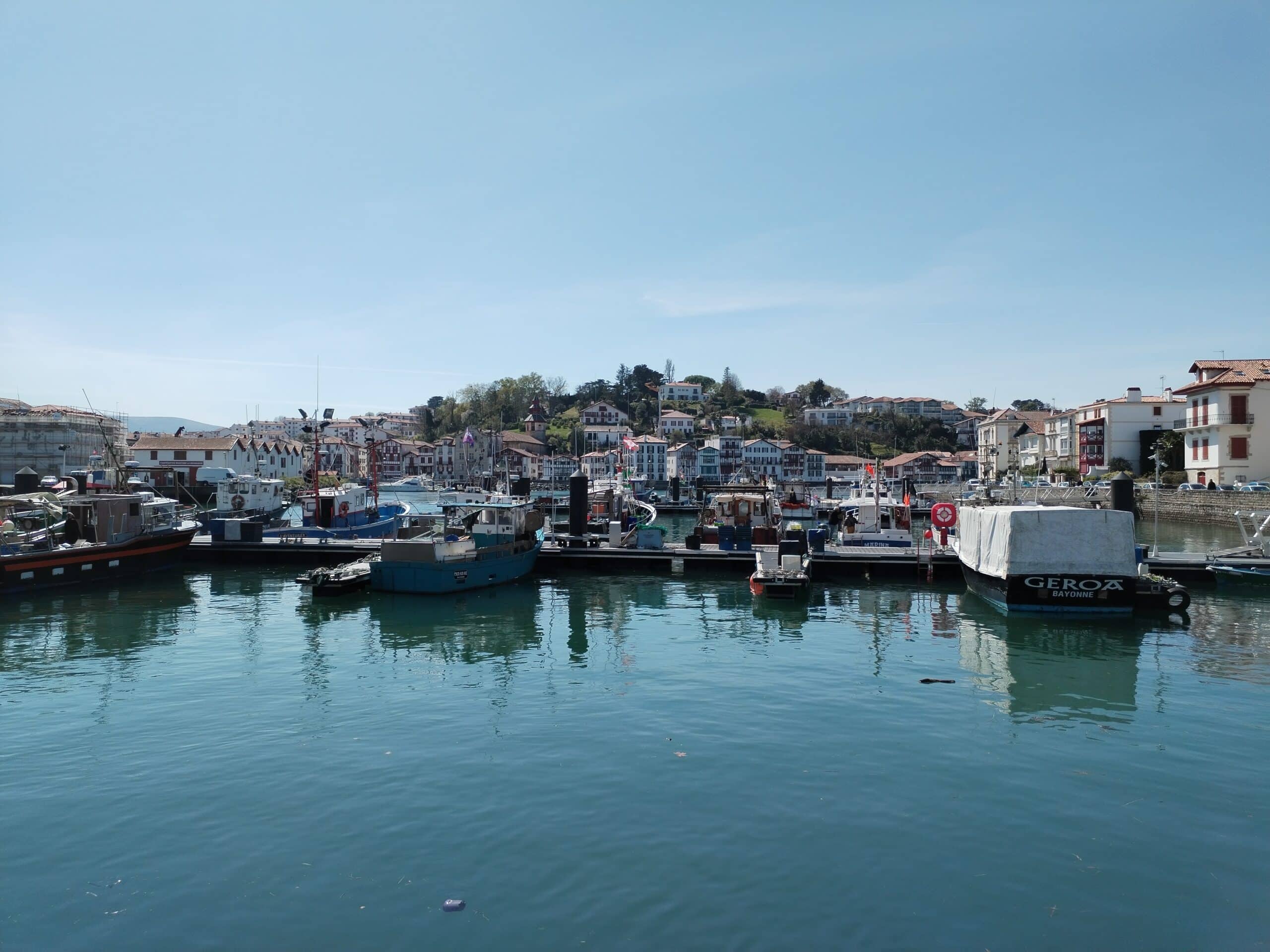
The port of Saint-Jean-de-Luz
The Boulevard and the Beach(es) (again)
Over at the sea front, there is another impressive beach, this time with a covered shopping gallery along its promenade. The beach overlooks the neighbouring town of Ciboure, which is on the other side of the river and bay, and from this beach you can make out some of its features, including its ancient lighthouse.
There are other beaches to the north of the town which are popular with surfers, and following the coast, you will eventually come to surfer spots in Guéthary. All in all, if you are a beachy person who needs a shop for either something to eat, or a souvenir hunt, you have it here.
Shopping
As we are saying, Saint-Jean-de-Luz is handy for shops and has a nice little retail area in the heart of the town, close to the beach. Le Coeur de Ville is there between the port and the beach and adds shopping options to those on the seafront. There aren't that many streets making up the town, but they have a lot of outlets. This gives the place a nice compact and buzzing feel.
Biarritz
Biarritz is probably the most famous internationally of the four places. It is an impressive sight with its high cliffs and seafront palaces. Places like this give the French Basque Country a majestic feel and while it is expensive compared to nearby Spanish options, it isn't inaccessible for tourists on a budget.
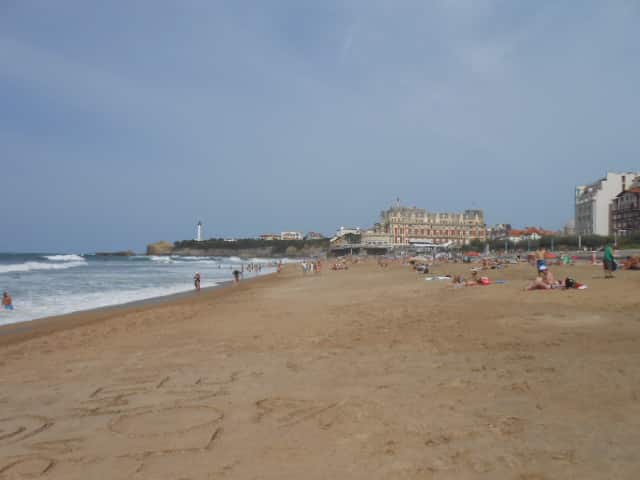
The Hotel du Palais in the distance, in Biarritz.
We came here a few years ago on December 26 for a day trip, expecting a grey day. While it was chilly on arrival in the morning, by early afternoon, you couldn't have said that. Surfers dot the Grand Plage, the main beach, all year round so it is nice to sit there and watch others brave the elements.
As we've mentioned, the seafront is dominated by large palaces, notably two casinos, so it's possible to have a flutter while you're sunning yourself. There is also a five-star hotel overlooking the beach, the Hotel du Palais.
While the big money is notable in the town, you can see that everyday folks make up the majority of visitors here.
Bayona
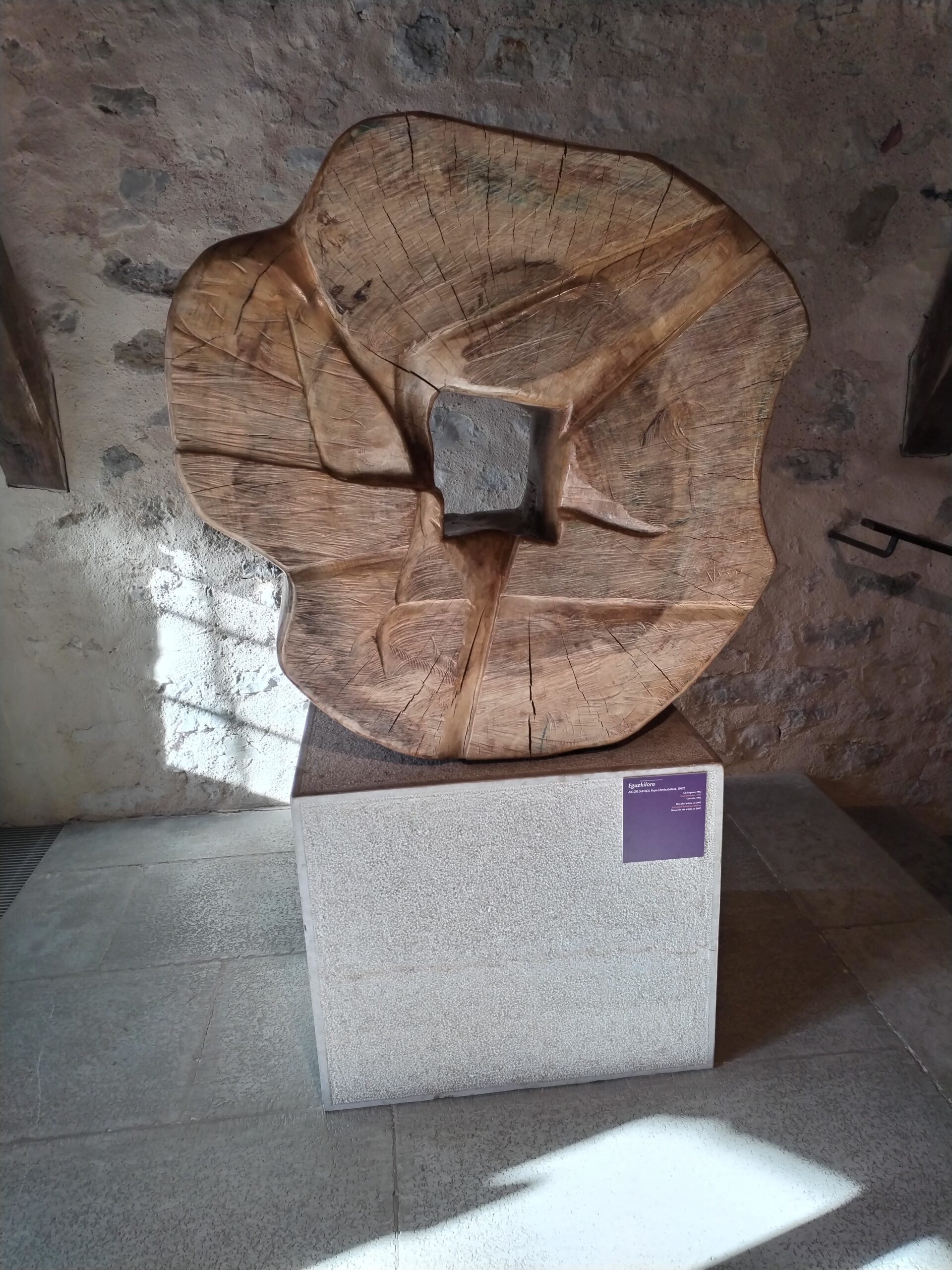
The Basque sunflower, Eguzkilorea, in wood in the Basque Museum in Bayona. Click on the image to see the museum's Instagram page.
Spelt Bayonne in French, this is the most populated area, with a population of fifty-plus thousand, and sits beside Anglet with a population of 40,000. It sits at the northernmost part of the French Basque Country on the Adour river, just where it converges with the Nive river.
The Old Town(s)
There are two parts to the old town, divided by the Nive river. The feeling of each part is also quite distinct. While Grand Bayonne, on the western bank is fancy and shopping-orientated, the easterly Petit Bayonne feels quite countercultural with a rustic feel to many shops. We found some wonderful wee book shops in Petit Bayonne and it seems the owners don't feel the need to paint their fronts. This creates an old-world feel, and the examples of street art around the place add to that vibe.
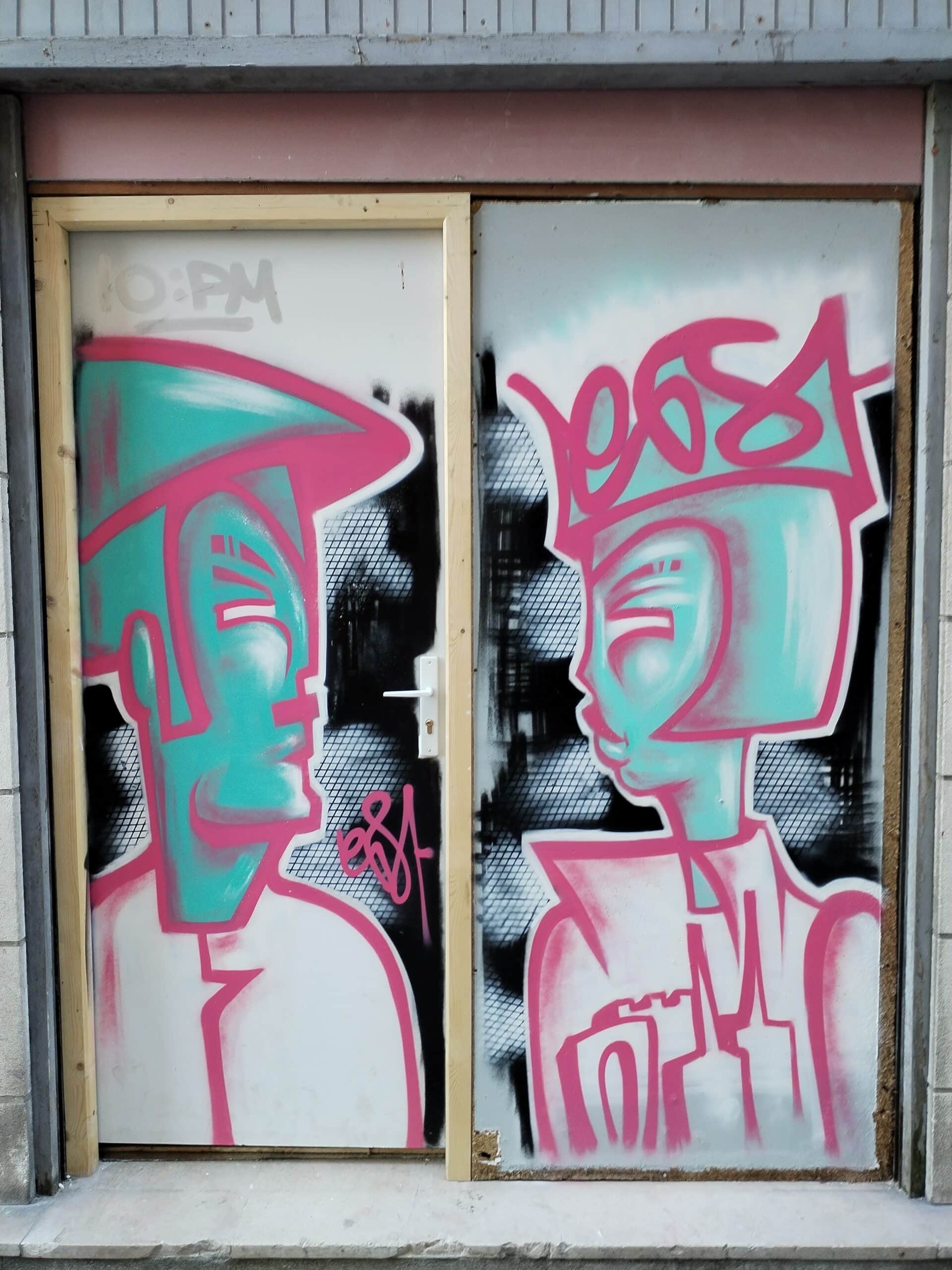
Wall Art in Bayona
The Basque Museum
We got to see this for free and it is full of history of the seven provinces of the Basque Homelands. There are many examples of maps of the Basque area as well as examples of their marine and agricultural culture. The Basque Country is a perfect mix of marine and inland culture, and this reflects in their cuisine.
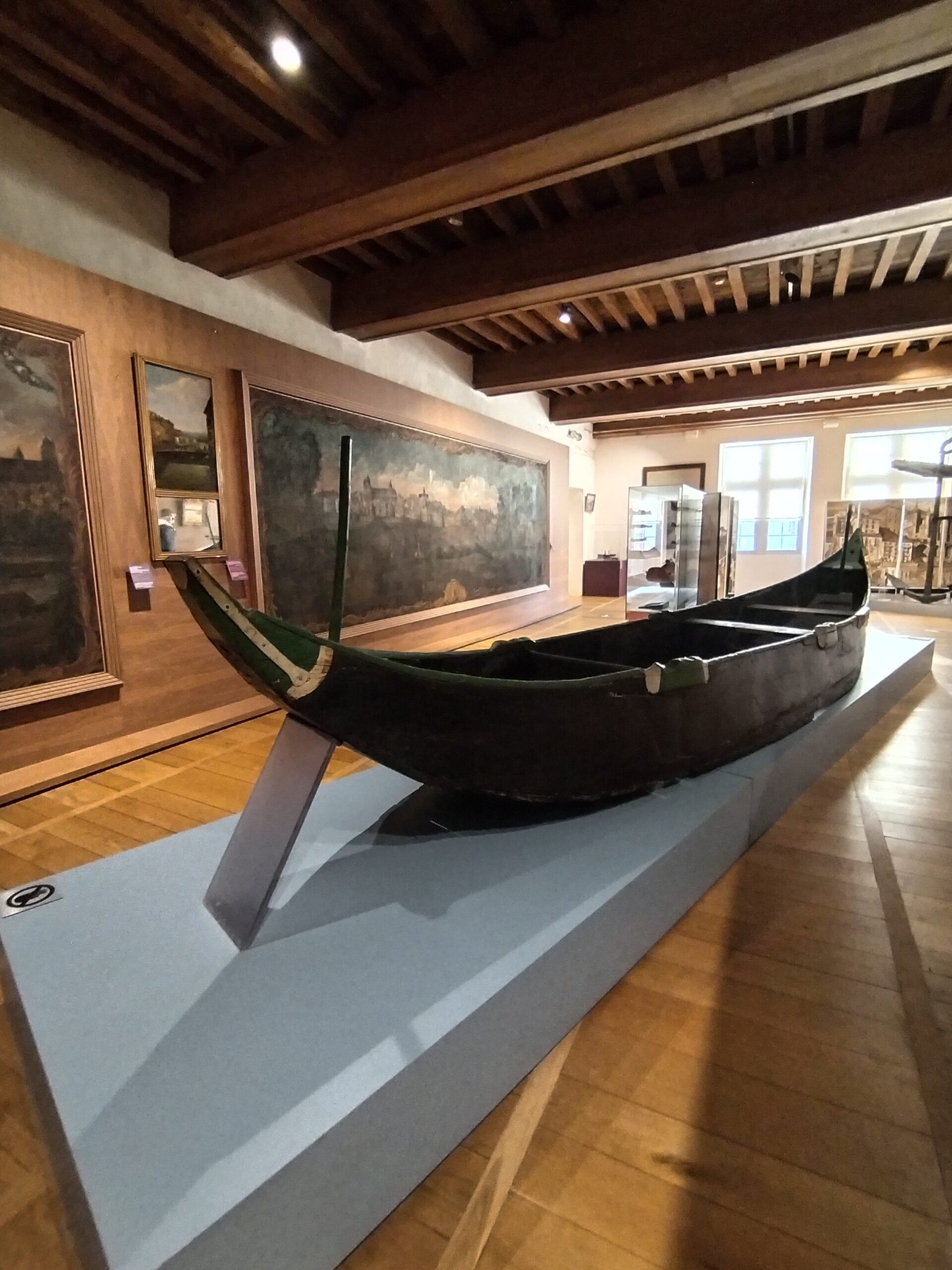
Examples of the Basque Country's proud naval tradition in the museum. Click the image to see more from the museum on Facebook.
The Botanical Gardens and Ancient Walls
The historical town zones of Petit and Grand Bayonne are surrounded by winding walls and gateways. The famous 17th Century engineer Vauban designed these. and they guide visitors into sights and scenes like the gardens. The Botanical Gardens sit atop a part of the old fortifications and look quietly over at the town's other architecture.
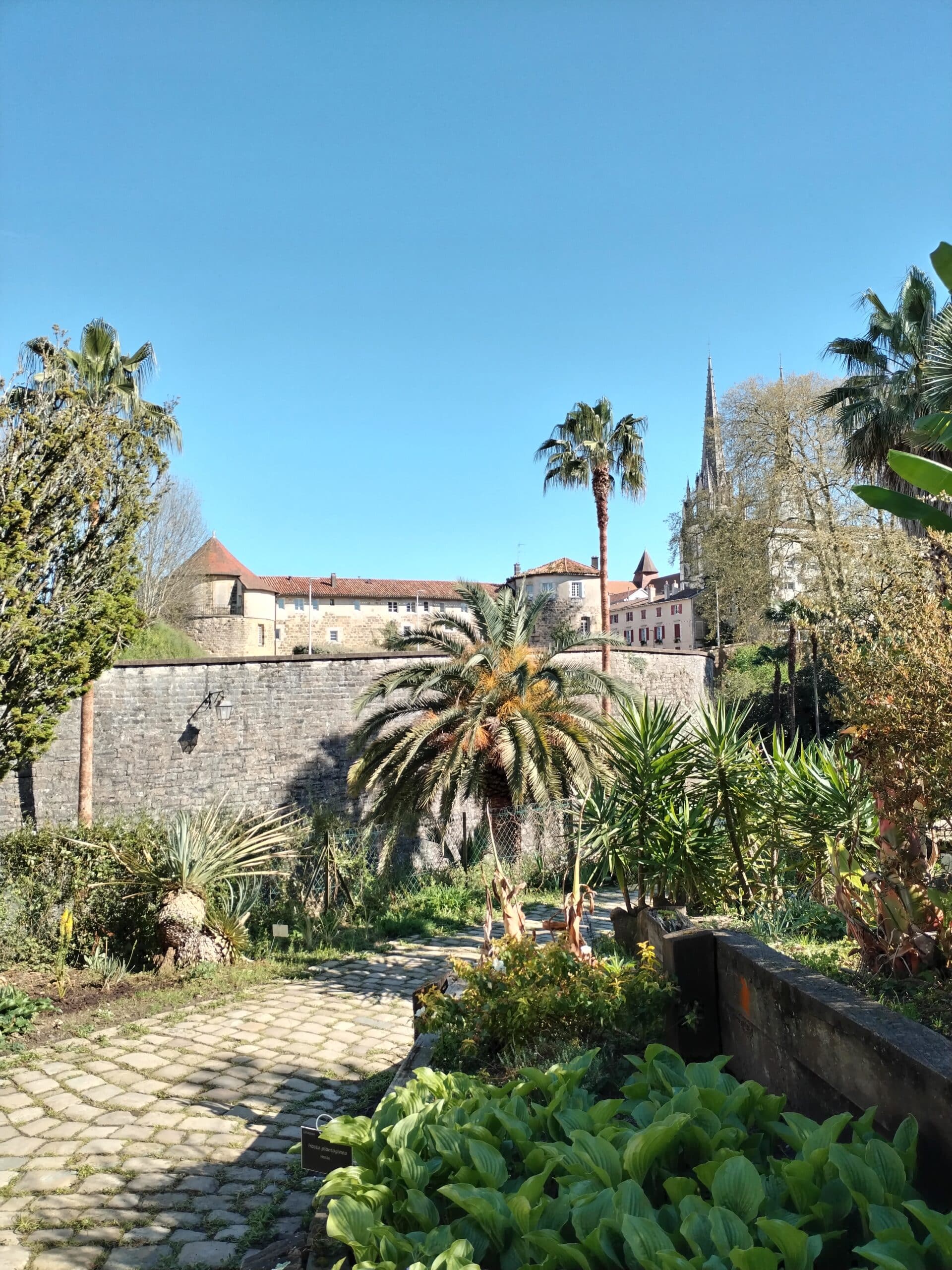
The Botanical Gardens of Bayona, looking over at the Château-Vieux, with the cathedral in the background
Honorable Mentions
Guéthary and Bidart look like they are host to some beautiful sunsets, though they are small and might be better for one-night stays or a visit of a few hours. They sit between Saint-Jean-de Luz and Biarritz and again, are surfer destinations.
Another place for another time (or a carbound journey) is Saint-Jean-Pied-de-Port, inland in Basse Navarre. There are three Basque provinces in Iparralde and Base Navarre, the middle province, is a historically-important region. The Kingdom of Navarre has a fascinating history of rising, falling, rising again then falling once more, and this is remembered by the locals. This town is also notable as the starting point of French Route of the Camino de Santiago.
Recommendations
We recommend staying in Bayona if you want to be in a big place or Saint-Jean-de-Luz if you want to be right beside the sea. Hendaia is interesting for its opportunity to visit the Spanish side of the border. That said, if you are from the Spanish side, you might think better to stay a wee bit further north. One reason for this is that the three more northern towns mentioned here are better served by shops. Hendaia can come across as heavily residential, with only a small retail area around its small central plaza.
It all depends on what you want to do yourself. If you are a beachy person who likes surfing and the like, the coastal towns are perfect. However, Bayona is a bit inland and slightly closer to Bordeaux. Therefore, if you are travelling northward, it might act as your springboard to there or even Paris. On the other hand, if you arrive from abroad at Bordeaux airport, then Bayona might be a stop and stay that helps you discover the whole enchanting area of Iparralde.
